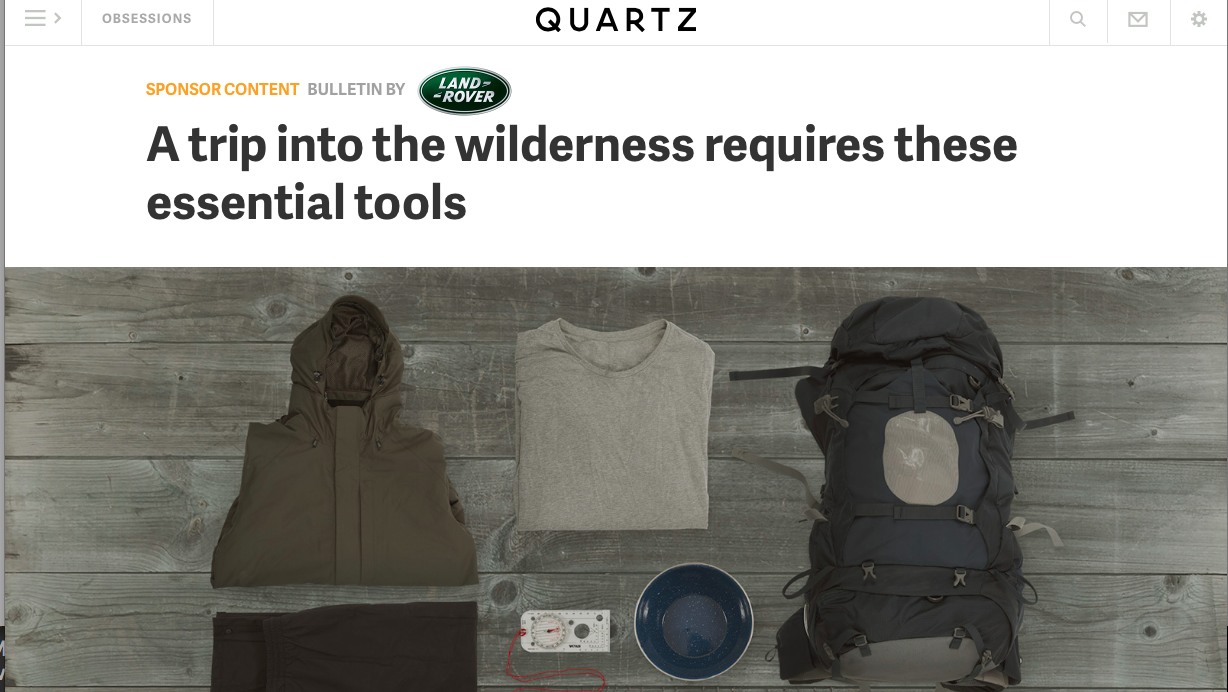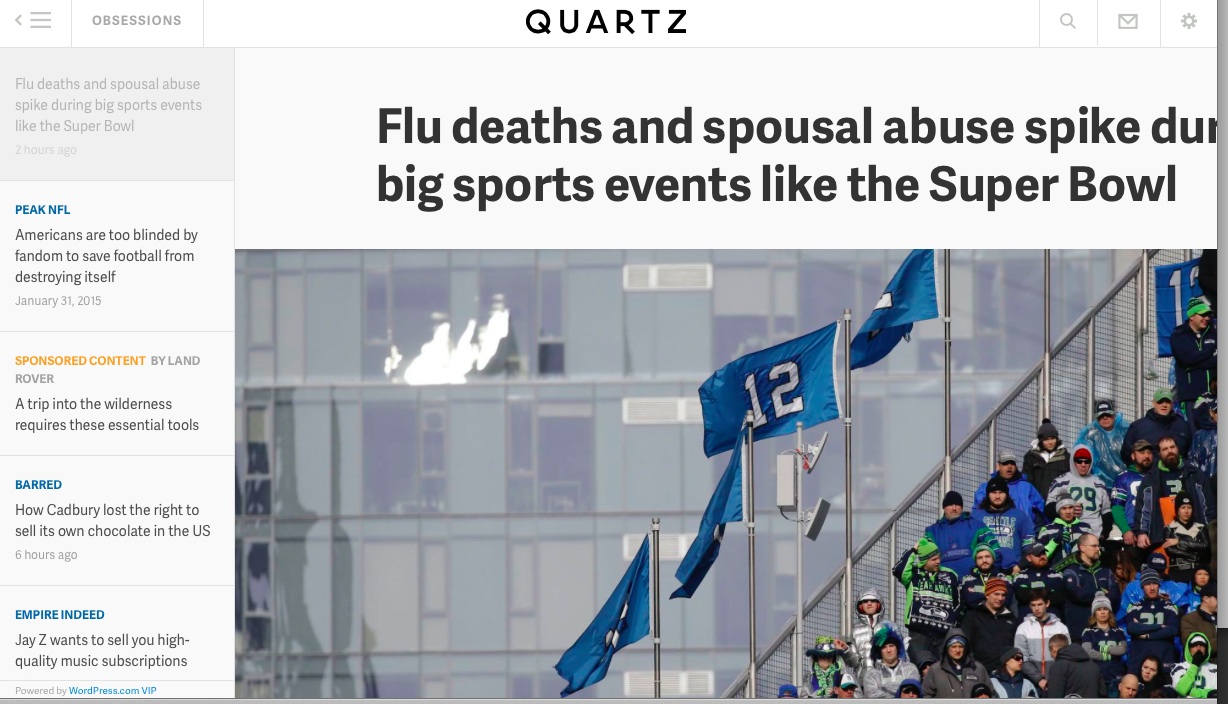


The Quartz guide to making ads that don’t suck
First, a disclaimer: We are true fans of everything that Quartz, Atlantic Media’s business news site, does.
This has been enhanced by a recent visit that I paid to the Quartz newsroom in New York City, and the grand personal tour that our art director Reed Reibstein and I got from Kevin Delaney, editor in chief & president of Quartz.
The moment we emerged from that visit and barely out on Park Avenue, Reed told me something that I had noticed myself: This newsroom is such a textbook example of how a modern news operation should run that we can imagine many of the publishers, editors and designers we work with, coming for a one-week internship.
What’s so different about Quartz?
In a nutshell, at Quartz there are no physical or mental walls separating the editors. There is a sense of the very creative in the air, which leads to what I refer to as “the Quartz magic”—which is difficult to explain, but begins with an innovative approach to how stories are ranked and headlined. (Headlines, by the way, are in total seduction mode all the time, and it is difficult to find another digital news organization doing it like Quartz).
I believe that how stories are selected is key to Quartz’ success. It appears that Quartz’ editors do not begin with a pre set agenda of what must be included. Instead, they manage to find that story out of the mainstream that is the one headline we have not read before. Even when the story is one of current interest, the treatment and angle are surprisingly different.
Sunday’s lead item for www.qz.com: Flu deaths and spousal abuse spike during big sports events like the Super Bowl.
Innovation at Quartz works at all levels, including advertising. Perhaps because there is no print legacy to trap them, editors of Quartz are not shy about applying some of their editorial philosophy to its advertising products as well.
A recent piece highlights this aspect of Quartz’ innovation:
Its two ad units, the jumbo-sized “Engage” displays ads and its “Bulletins” sponsored content units, are both built around creating ad experiences that take cues from the site’s editorial content: The Engage ads, usually built by Quartz’s in-house creative services team, are designed to fit seamlessly with the articles around them, and Bulletin ads frequently feature visualizations and other interactive elements, which Quartz has become known for. Quartz’s thesis isn’t that there isn’t a place for display ads online but rather that those ads have to be contextual, both in form and content, with everything else.
Another reason for us to insist that everyone engaged in digital storytelling subscribe to Quartz and use it as a live textbook of good practices.